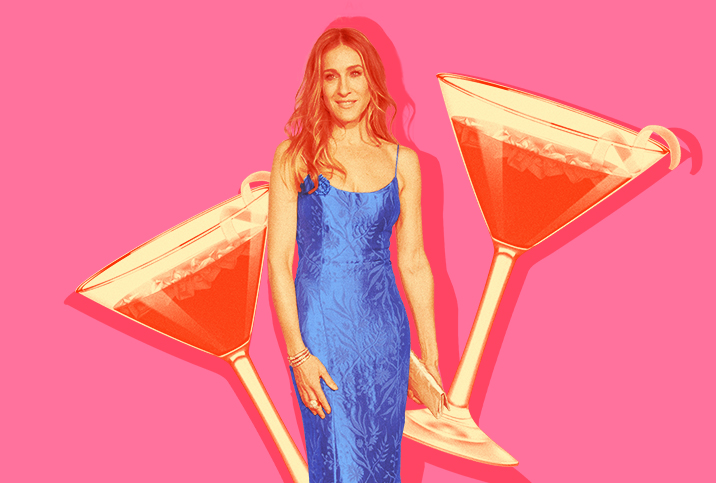What's the Truth about HBO's 'Minx' Magazine?

The 1970s sexual revolution brought a wave of slick, professional, even credible erotica: adult films and magazines that openly sold sex and refused to be shamed—the blockbuster porno "Deep Throat" even garnered a review by film critic Roger Ebert. But the industry also spurred anti-porn protests, including from many feminists.
But pornography in the '70s was ruled by men and marketed almost exclusively for the male gaze. Meanwhile, another group was left out in the cold: audiences hungry for titillating depictions of men. They were out there. They were just deeply underserved.
HBO's "Minx," which recently finished its first season and was renewed for a second, follows the creation of the first erotic magazine for women. In the series, which takes place during the '70s, Minx magazine is helmed by the feminist editor Joyce (played by Ophelia Lovibond) and the publisher Doug (a delightfully greasy Jake Johnson) in Los Angeles. Together, they build a brand to satisfy women without talking down to them, printing informative articles and an artfully photographed dong or two.
Was "Minx" a real magazine?
Many viewers may understandably be distracted by the knowing humor and copious penis shots in "Minx" (HBO once again proves that it's the most equitable network in terms of showing both male and female nudity). Amid this, they're likely to ask: What is based in the reality of '70s erotica and, conversely, what's myth? Here's a quick primer on what's generally true, what's not so accurate and what's pure fantasy in "Minx."
Playgirl and Viva paved the way
Minx magazine is a work of fiction. According to the New York Times, the premise is loosely inspired by 1970s erotic magazines for women, particularly Playgirl and Viva. You may recognize the name Playgirl, which was published until 2016 and saw a relaunch in 2020. Viva came from the team behind Penthouse, a Playboy competitor, and existed from 1973 to 1978.
The fictional Minx, like the real Playgirl and Viva, attempts to capture the female gaze. Early episodes of "Minx" try to faithfully show how Cosmopolitan caused controversy in 1972 when it published a nude photo spread of actor Burt Reynolds, its first-ever male centerfold. In the show, Joyce's female co-workers hover over the centerfold, feeling both awkward and genuinely turned on by what they're seeing.
'Nobody talked about it, but women liked to look at men naked, [too].'
"At the time, you know, men liked to look at women naked," then-Cosmo editor Helen Gurley Brown would later say of the stunt. "Well, nobody talked about it, but women liked to look at men naked. I did."
Sure, the Reynolds nude photo is deeply '70s, with its bearskin rug. And Reynolds' arm covers his genitals. Even today, the picture is not only iconic, it's hot. As in "Minx," the world reacted with both swooning approval and scorn. What the series doesn't cover: Reynolds ended up regretting the move, believing he was an "egomaniac" during this part of his life.
A woman's idea—or a man's?
In the show, Joyce launches her erotic magazine immediately after the Reynolds nude spread. Indeed, Playgirl and Viva both came in the wake of the provocative Cosmopolitan issue, reaching newsstands in 1973. At first, Joyce pitches a less steamy publication for liberated women. The seemingly sleazy yet crafty Doug convinces her to pursue Minx instead with his help and funding. Doug—who wears gold chains, chest hair-baring shirts and bell bottoms—oversees a small, scrappy erotica empire out of dumpy offices in L.A.
However, Minx the magazine is clearly Joyce's creative vision, even if aided by a surprisingly (for the time) supportive Doug.
As for Playgirl, the publication sprang from the imagination of a man, nightclub owner-turned-publisher Douglas Lambert, Esquire reported. On the other hand, according to a Shondaland report, the inception of Viva is debatable; the idea for the magazine came from the mind of either Penthouse female editor Gay Bryant or the Penthouse male founder, Bob Guccione. What's clear in both HBO's show and the historical record is men still had a heavy hand in controlling erotica sold to women.
Past and the future print
In the show, Minx magazine comes off as an epically successful project with issues being gobbled up across the country and rankings near the top of publishing lists. But its prospects likely would've been dimmer in reality: Viva consistently struggled to turn a profit, leading to its untimely demise.
At its height in the late '70s, Playgirl sold about 1.5 million copies per issue. In comparison, Hugh Hefner's Playboy had a circulation of about 6 million around the same time, putting it firmly in the top 10 of popular magazines. Erotica for women has always been somewhat off the mainstream radar.
From there, "Minx" takes a deep dive into speculation and plot mechanics to build its own mythology. After Joyce and Doug have a falling out, the future of Minx magazine is called into question. But something tells us it will keep turning heads in season two. And if it's a happier place to work and a bigger deal than history would suggest it should be, well, HBO viewers probably won't complain.


















